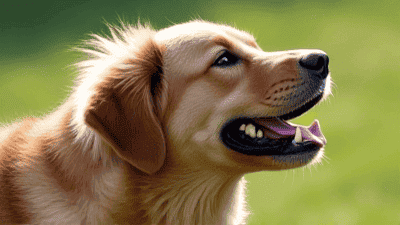Addressing Aggressive Behavior in Dogs: Understanding Triggers and Solutions
- 91,399

Aggressive behavior in dogs can be a challenging and concerning issue for pet owners. Whether it’s growling, snapping, or biting, aggression can stem from various underlying causes, including fear, territoriality, or frustration. Understanding the triggers of aggressive behavior and implementing effective solutions is essential for ensuring the safety of both your dog and those around them.
Aggression is a behavioral response in which a dog displays threatening or harmful actions toward a person, animal, or object. It can range from subtle warning signs, such as growling, to more severe actions, like biting.
Aggressive behavior in dogs can be caused by a variety of factors, including genetics, environment, and past experiences. Identifying the root cause is the first step toward addressing the issue effectively.

Fear aggression occurs when a dog feels threatened or cornered. It’s a defensive response aimed at protecting themselves from perceived danger.
Territorial aggression involves a dog defending their space, such as their home, yard, or owner, from intruders.
This type of aggression is directed toward perceived threats to a dog’s family members, especially children or other pets.
Also known as resource guarding, possessive aggression occurs when a dog becomes aggressive over food, toys, or other objects they consider valuable.
Redirected aggression happens when a dog is unable to direct their aggression toward the source of their frustration and instead targets a nearby person or animal.
Dogs in pain may become aggressive as a way to protect themselves from further discomfort or injury.
Social aggression is often seen in multi-dog households and involves conflicts over dominance or social hierarchy.
Predatory aggression is driven by a dog’s natural hunting instincts and is often triggered by small, fast-moving animals or objects.

If your dog displays aggressive behavior, consult a veterinarian or a certified dog behaviorist to rule out medical causes and develop a tailored behavior modification plan.

Expose puppies to a variety of people, animals, and environments during their critical socialization period (between 3 and 14 weeks of age) to reduce fear-based aggression.
Ensure your dog gets enough physical exercise and mental enrichment to prevent frustration and boredom, which can lead to aggression.
Spaying or neutering your dog can reduce hormone-driven aggression, particularly in males.
Avoid using punishment-based training methods, as they can increase fear and aggression. Instead, focus on positive reinforcement.
A certified dog behaviorist can assess your dog’s aggression, identify triggers, and create a customized behavior modification plan. They may also recommend tools like muzzle training or calming aids.
Behavioral changes take time. Stay consistent with training and management strategies, and be patient with your dog’s progress.
Monitor your dog’s behavior and adjust your approach as needed. Regular check-ins with a behaviorist or trainer can help ensure long-term success.
Focus on building a strong bond with your dog based on trust and positive reinforcement. A trusting relationship can help reduce anxiety and aggression over time.
Addressing aggressive behavior in dogs requires a combination of understanding, patience, and effective training techniques. By identifying the triggers of aggression and implementing appropriate solutions, you can help your dog feel more secure and reduce their aggressive tendencies. Remember, aggressive behavior often stems from fear, discomfort, or lack of socialization, so it’s essential to approach the issue with empathy and care. If you’re struggling to manage your dog’s aggression, don’t hesitate to seek professional help. With the right approach, you can create a safer and more harmonious environment for both your dog and your family.